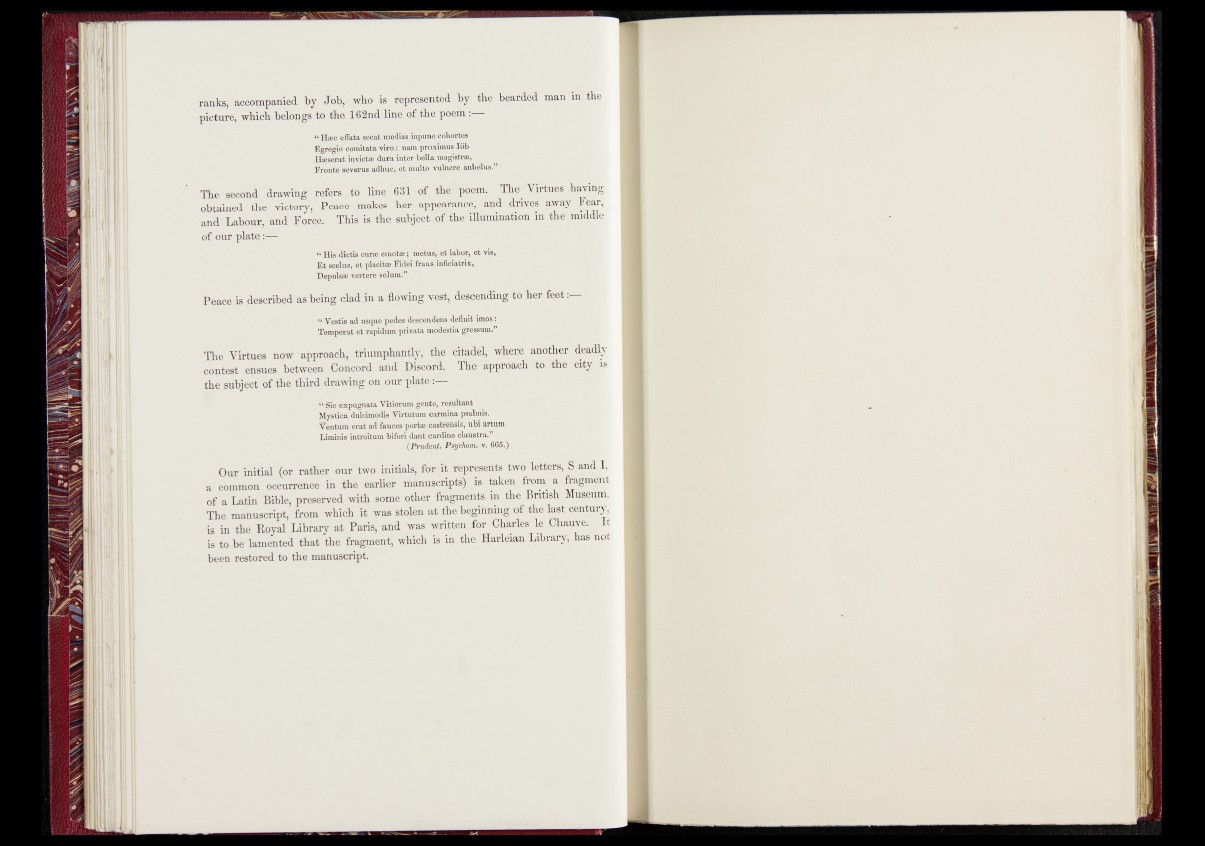
ranks, accompanied by Job, who is_ represented >y the berardéd man in the
picture, which belongs to the 162nd line of the poem
“ Hæc effata secat médias iapüne-'oqbortês ■ "
Egrégio comitata 'Viro : nam-proximus löb
Hæserat invictæ dura inter bella magistrse,
Fronteseverus adhuc, et ffiulto vuïnere anhelug'^j
The jseedai drawing refers to line 631 of they poem.- Thé “Virtues haying
obtained the victory, Peace makes her appearance, and drives away Fear,
and .Labour, and Force. This is thé. subject -'of the illumination m the middle
of ottr plate t S | ^
“ His diotis ourse emotæ ; metus, et labor, et vis,
Et scelus, et placitæ Fidei fraus infleiatrix,
Depulsse vertere solum.”
Peace is described as béng clad in a flowing vest, descending to her fept
“ Vestis ad usque pedes descendent déduit, imos :.
Temperat et-rapidnm pjiyata modestia gressow»”
The Virtues now approach, triumphantly, the’ citadel, where another deadly
contest ensues between .Concord and Discord: g jfe ‘approach to 'the city ,,is |
the subject of the third drawing ompurplate -
• “ Sic expugnata Vitiorum gente, resultant
' Mystica duldmodis -Virtutum caiyiina psalmis. ^
Ventum erat ad'fauces port» cagtrensis, ubi art urn-
Liminis introitum bifori dant.cardine claustra.”
W M Prudmt. Psychom. v. 665,)'.
Our initial (or rather our two initials, for it represents fti|o letters,, S and I,
a common occurrence in the earlier manuscripts)" is taken from a fragment
of a Latin Bible, preserved with some other fragments in thé British Museum.
The manuscript, from which it was stolen at the beginning of tire last.century,
is in the Royal'Library at Paris, and was written Jo r Chiles K „Chauve, *
is to be lamented that the fragment, which is in the Harleian Library, has n |t
been restored to the manuscript.